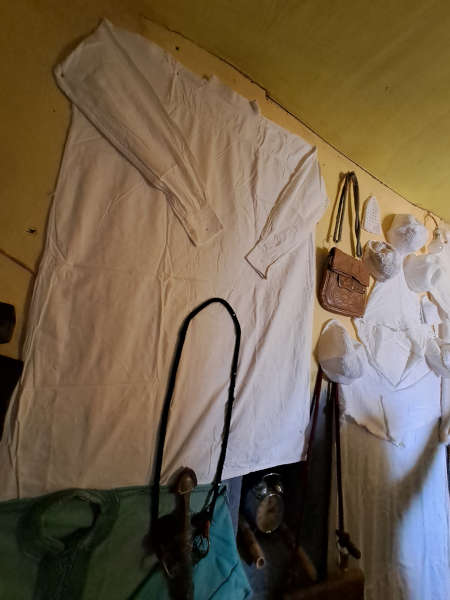

CHI UPDATE: Documenting the Mellahs (Jewish Quarters) of Tiznit, Morocco
By Ratiba Rigalma | University of Ibn Zohr Aït Melloul, Agadir ; ASOR implementer in Morocco
The Kingdom of Morocco has a plentiful and diverse cultural heritage, rooted in the great depth of its history. Jewish culture is considered one of the many branches of Morocco’s original culture. Although it is difficult to precisely determine the historical framework of Jewish presence in Morocco, there is no doubt that it dates to ancient times. If we refer to tombstones found in the city of Ifrane in the South. Jewish presence in Morocco dates back to the 2nd millennium BCE.
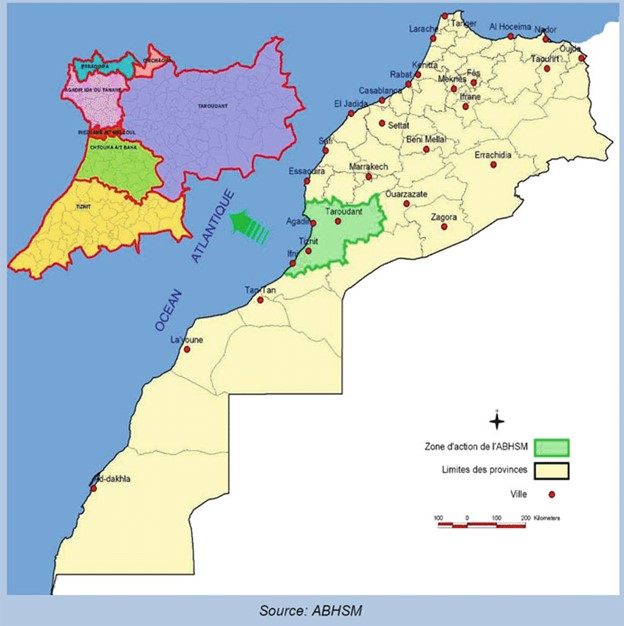
Map of Morocco indicating the region of Tiznit where the documentation project was conducted (https://www.researchgate.net/figure/Geographic-situation-of-the-Souss-Massa-watershed_fig1_310736570 [accessed July 4, 2023])
Many scholars studied the Jewish cultural heritage in Morocco, especially in major cities such as Fez, Essaouira, and Marrakesh. However, Jewish heritage in southern Morocco has been neglected for a long period of time, despite the existence of substantial tangible and intangible evidence attesting to its importance in historical, cultural, and economic studies. This history, which has long been sidelined, needed to be investigated thoroughly to reveal its richness, especially in the region that was the link in the caravan trade between Sub-Saharan Africa and Northern Morocco.
The American Society of Overseas Research (ASOR) has been operating in the Maghreb a project on documenting cultural heritage sites belonging to religious and ethnic minorities. In this context, ASOR supported my research project on the mellahs of Tiznit, a city on the west coast of the region of Souss-Massa. Mellah is Moroccan Arabic for referring to a neighborhood inhabited only by Jews. A few of these Jewish neighborhoods have already been mentioned by some travelers and historians such as Charles de Foucauld in his voyage to Morocco in 1883-1884, Jean Chaumeil in 1953, and Mohammed Mokhtar el-Soussi in 1966. However, the study that I carried out aimed at documenting the entire Jewish cultural heritage in this region, with a focus on the tangible heritage. Specifically, I examined the mellahs and all the edifices they contained: houses or synagogues, souks (markets) that were overseen by Jews, and cemeteries where one can still find tombstones inscribed with the names of the deceased in Hebrew.
Seven mellahs have been identified in Tiznit: Mellah Tahala, Mellah Tatlet, Mellah Iligh, Mellah Ouijjane, Mellah Assaka Ou Ballagh, Mellah Tilline, and Mellah Tandghourt.
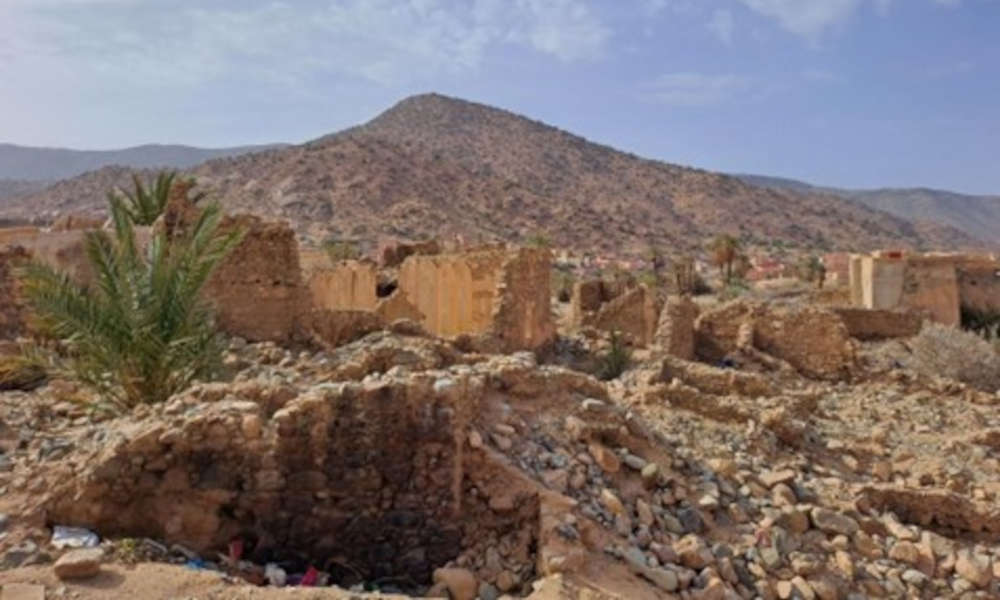
Remains of the Tahala mellah (photo Ratiba Rigalma)
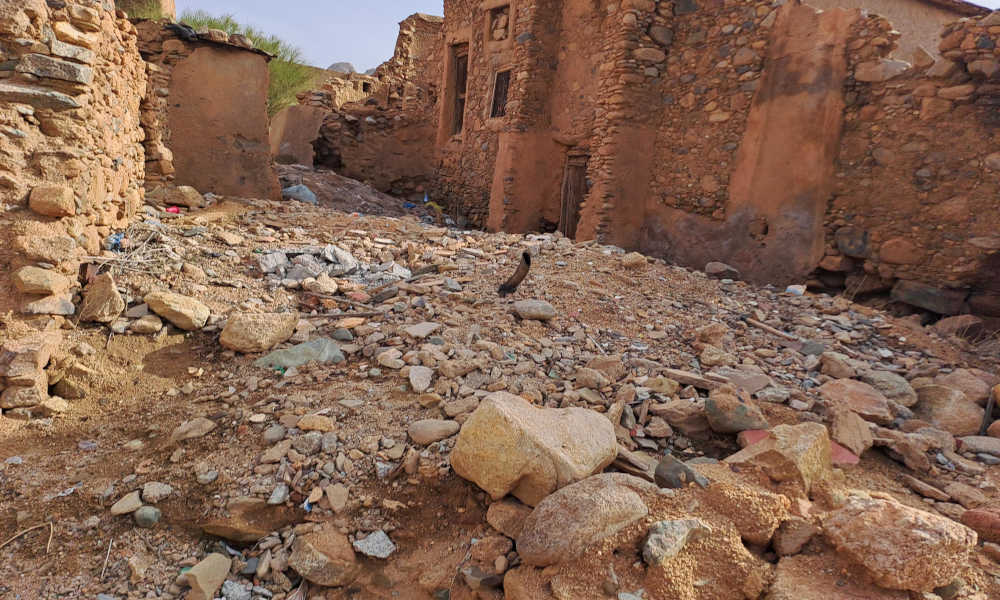
Dilapidated remains in the Tahala mellah (photo Ratiba Rigalma)
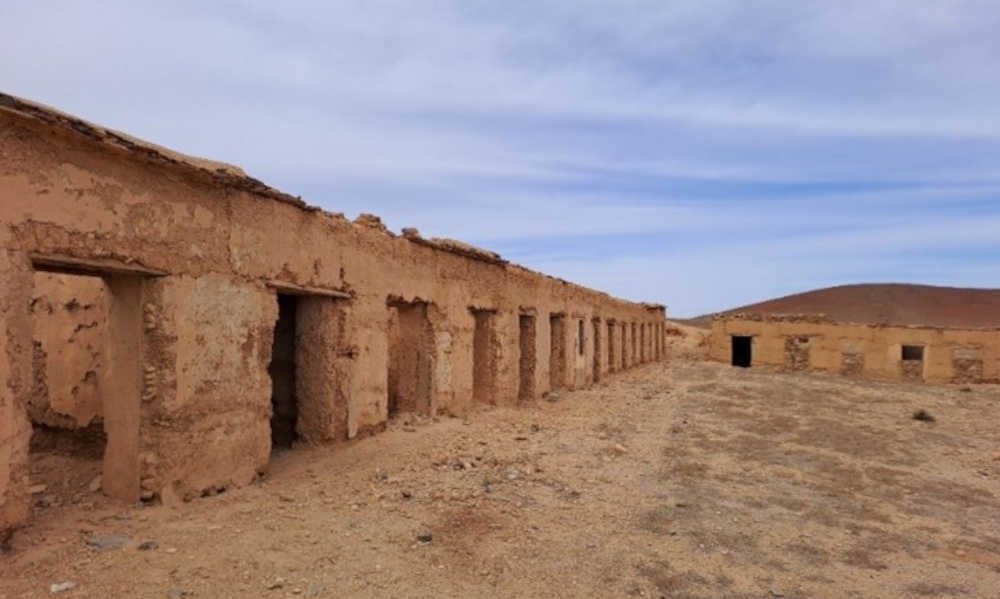
The international market of the Mellah Illigh – Sidi Ahmed Omoussa community (photo Ratiba Rigalma)
In addition to these residential neighborhoods, some places still retain the topography of the Jewish presence like “Tiza Oujayyen” (the Stone of the Jews) beside the Village of Tachket and “Dou Mellah” (Beside Mellah) in the Amaragh village in Aglou. Each mellah of this area contains one or two synagogues characterized by the presence of four columns in the center. These temples were constructed with stones and bear decorations of triangles and arches on the facade. As for the Jewish cemeteries, they are typically separated into two: one dedicated to adults and one to children. I was able to identify Jewish cemeteries in Aska Ublagh. Occasionally, we find three cemeteries in one city such as in the mellah of Tillin.
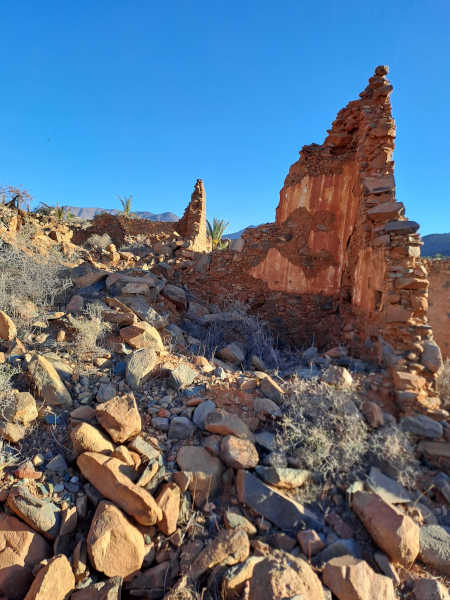
Remains of a Jewish house in Tilline mellah in Tiznit (photo Ratiba Rigalma)
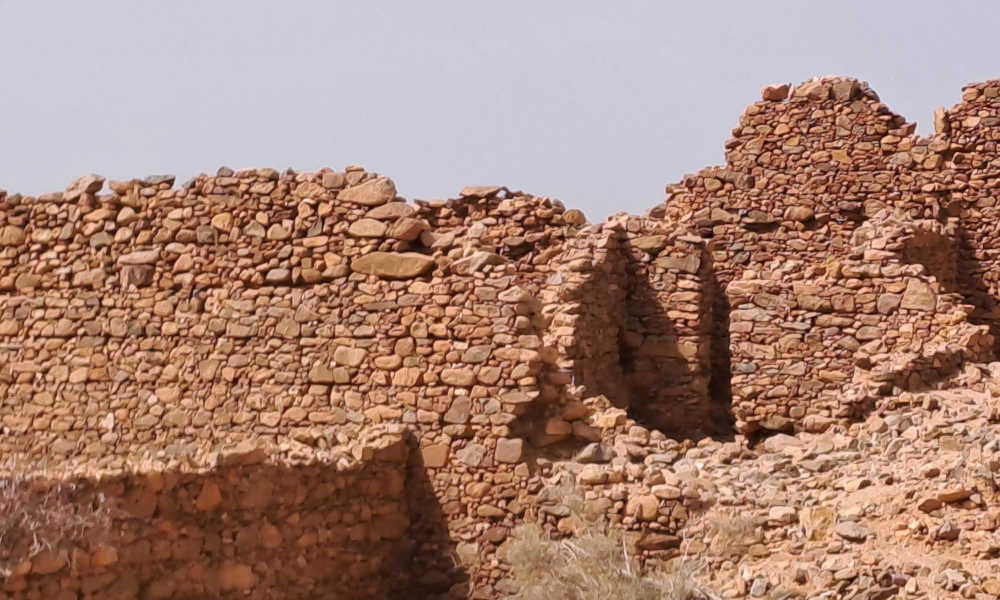
Remains of a Jewish house in Tandghourt in Tiznit (photo Ratiba Rigalma)
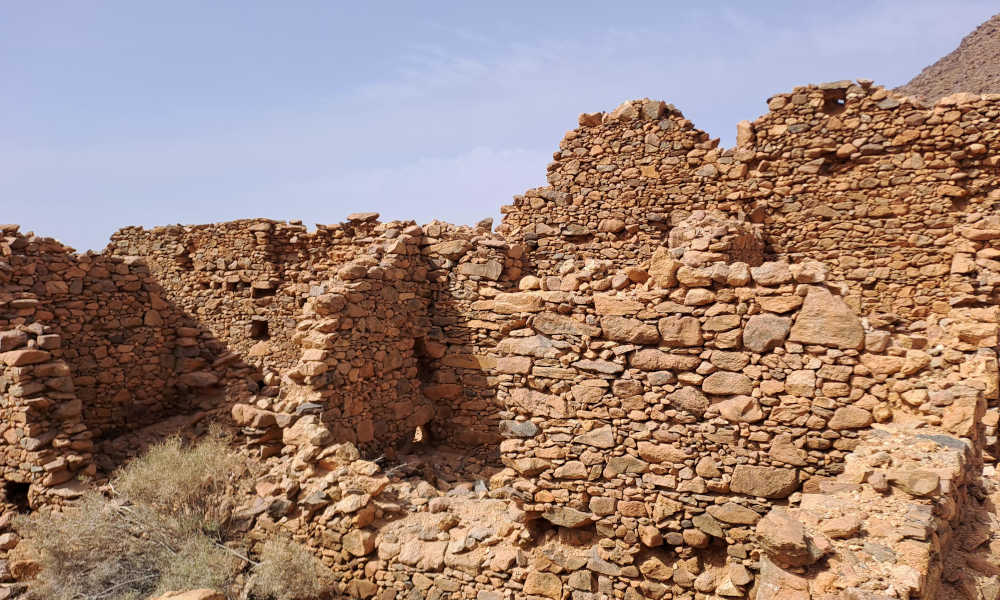
Remains of a Jewish house in Tandghourt in Tiznit (photo Ratiba Rigalma)
Fences were placed around all these cemeteries even though they do not have tombstones, with the exception of the cemeteries of Illig and Tahhala which contain tombstones bearing epitaphs written in Hebrew. As for the Jewish cemetery of Woujan, most of the graves have disappeared or are only indicated by a pile of stones. Unusually, this cemetery is not fenced, and we only know of its existence from the toponymy. Indeed, the local names of the locality where it is situated, Tawrit Oudayin, Tarit Omos, and Medinet Oudayin, mean respectively “Cemetery of the Jew” or “Cemetery of Moses”.
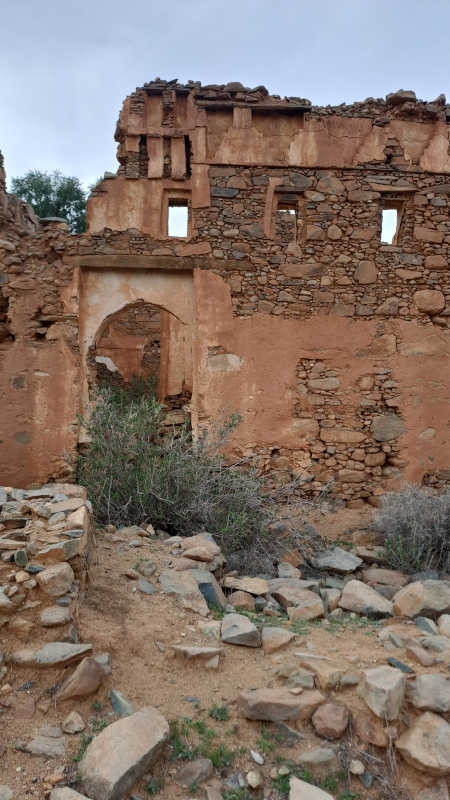
Jewish synagogue in Tilline mellah in Tiznit (photo Ratiba Rigalma)
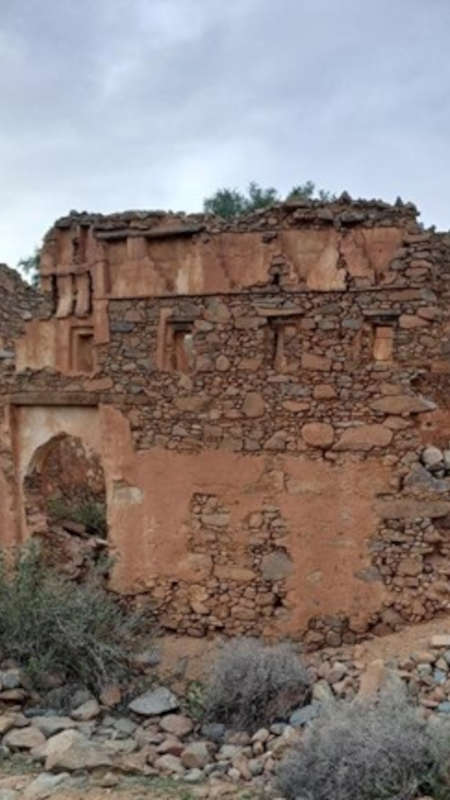
Jewish synagogue in Tilline mellah in Tiznit (photo Ratiba Rigalma)
As for the intangible heritage, it is well known that Tiznit is linked to a legend about the arrival by sea of some Jews to Morocco to establish a settlement by a mountain now called Akrizim. It is believed that they gave this mountain its current name after the Gerizim Mountain near Nablus and biblical Shechem in the West Bank.
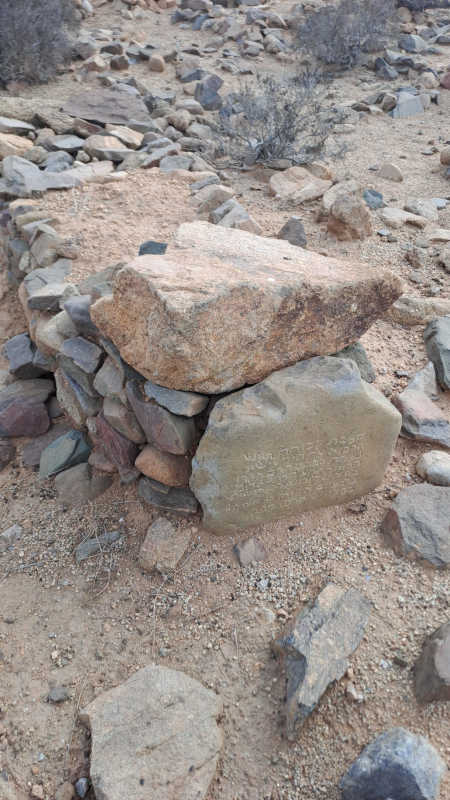
Jewish tomb in the cemetery in Illigh – Sidi Ahmed Omoussa community (photo Ratiba Rigalma)
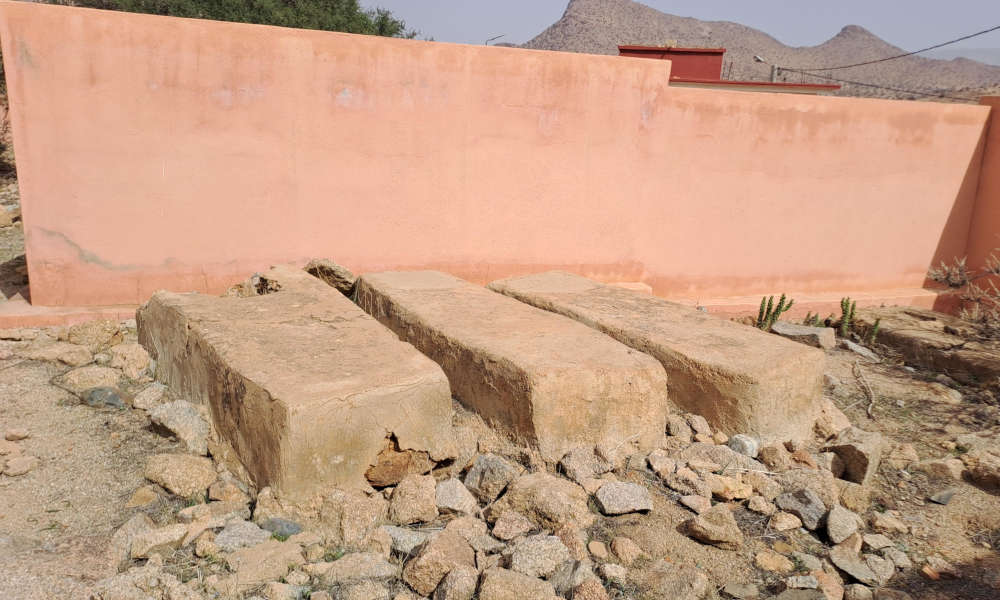
Jewish tombs in the cemetery of Tahala mellah (photo Ratiba Rigalma)
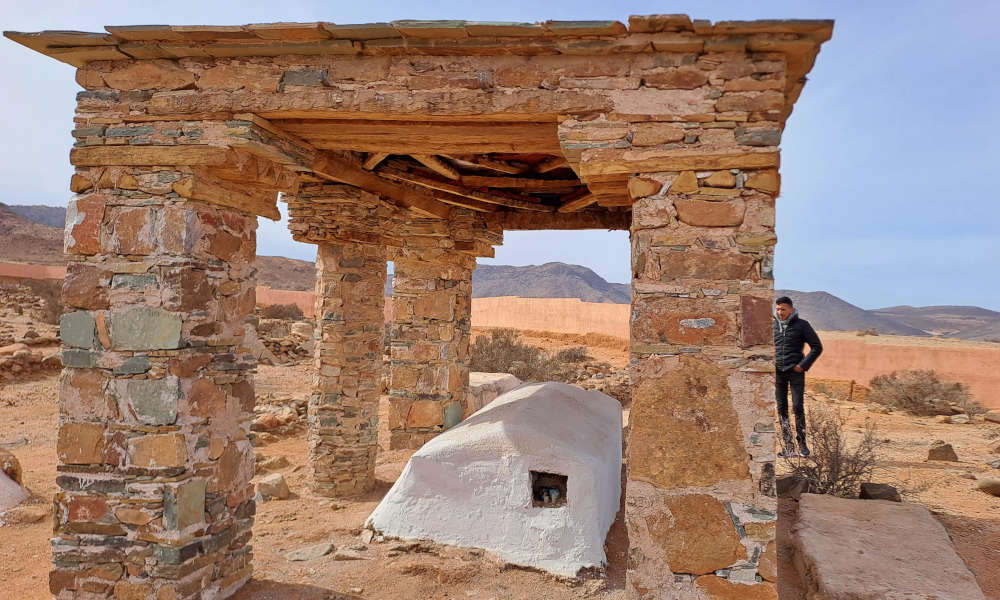
Restored tomb of a Rabbi in the Jewish cemetery of Illigh in Tiznit (photo Ratiba Rigalma)
It was obvious from my project that the Jewish tangible cultural heritage in Tiznit is quite rich. But it was also clear how urgent it is to protect it. Listing it on Morocco’s national heritage list as well as implementing extensive documentation and conservation projects would be appropriate actions to save this rich patrimony. This incredible heritage should also be included in cultural tourism circuits in the region. Indeed, it is a resounding testimony of the shared interfaith and cultural life between Jews and Muslims in Morocco.
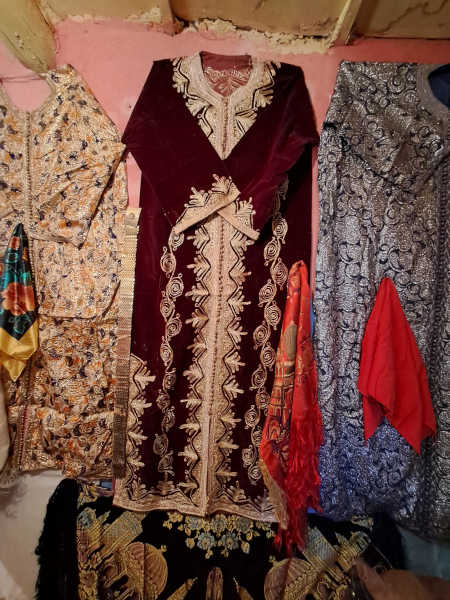
Jewish female dresses from the Tahala mellah (photo Ratiba Rigalma)
